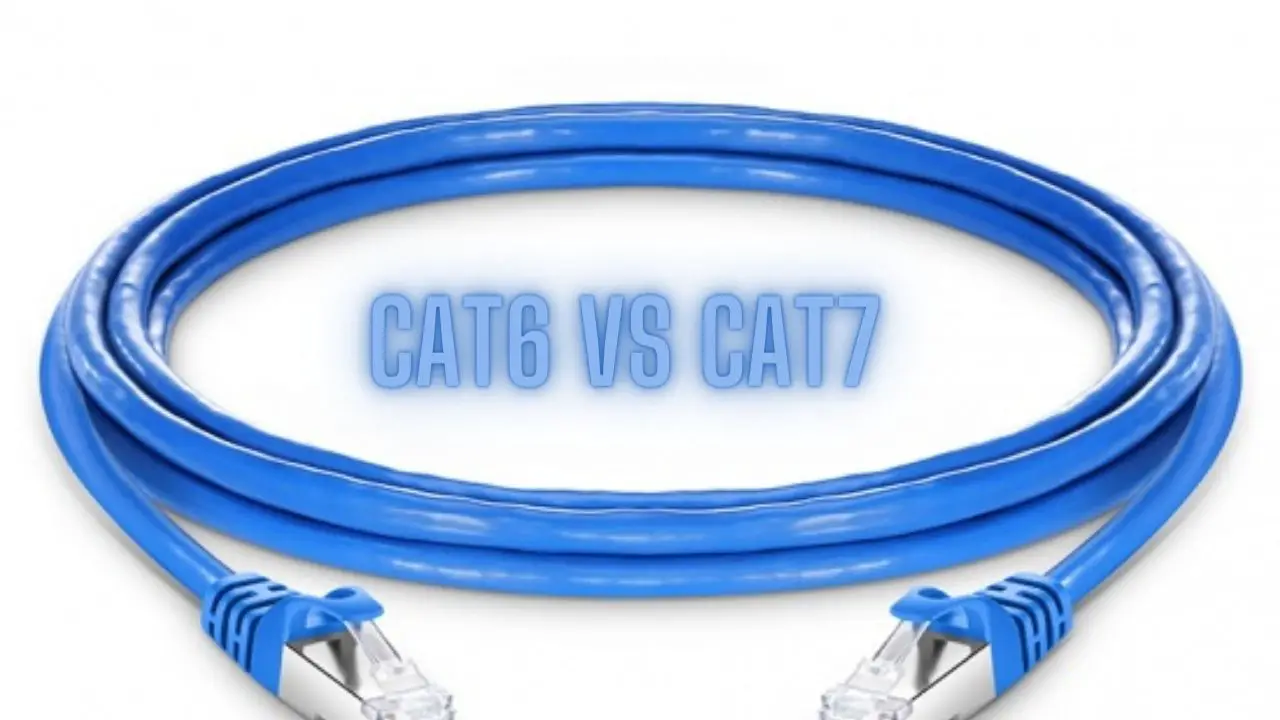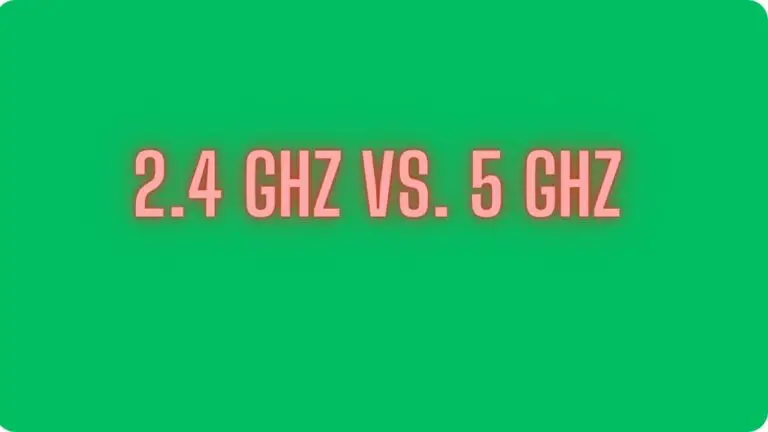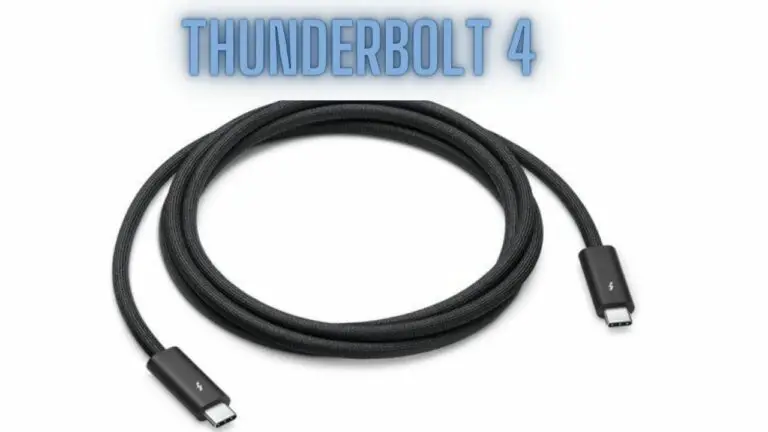Cat6 vs Cat7 | Comparison and Major Differences
Introduction
Ethernet cables are the backbone of modern networking, facilitating the transmission of data between devices in homes, offices, data centers, and beyond. Cat6 and Cat7 cables represent two popular options for Ethernet connectivity, each with its own set of features, specifications, and performance capabilities. Understanding the differences between Cat6 and Cat7 cables is essential for selecting the most suitable option for your networking requirements.
In this article, we will explore the key distinctions between Cat6 and Cat7 cables, including their construction, bandwidth, data transfer rates, shielding, interference resistance, cost, and compatibility. By examining the characteristics and capabilities of each cable type, readers will gain insights into which option best aligns with their networking needs and infrastructure.
Whether you’re setting up a home network, upgrading an office environment, or deploying a high-speed data center solution, understanding the differences between Cat6 and Cat7 cables will empower you to make informed decisions and optimize your network performance. Let’s delve into the world of Ethernet cables and explore the nuances of Cat6 vs Cat7.
Understanding Ethernet Cables
Ethernet cables, also known as network cables or LAN (Local Area Network) cables, are essential components of wired networking infrastructure. They facilitate the transmission of data between devices such as computers, routers, switches, and servers within a network. Ethernet cables use standardized connectors and wiring schemes to ensure compatibility and interoperability across various networking equipment.
Here are some key aspects to understand about Ethernet cables:
- Physical Structure: Ethernet cables typically consist of four pairs of twisted copper wires encased in a protective outer jacket. The twisting of the wire pairs helps reduce electromagnetic interference (EMI) and crosstalk, improving signal integrity and reliability.
- Categories (Cat): Ethernet cables are categorized based on their performance specifications, with each category denoted by the prefix “Cat.” Common categories include Cat5e, Cat6, Cat6a, Cat7, and Cat8. Higher category cables generally offer higher bandwidth and faster data transfer rates.
- Bandwidth: Bandwidth refers to the maximum data transfer rate supported by an Ethernet cable. It is measured in megabits per second (Mbps) or gigabits per second (Gbps). Higher category cables typically support higher bandwidths, allowing for faster data transmission.
- Data Transfer Rates: The data transfer rate, often referred to as the “speed” of the Ethernet connection, determines how quickly data can be transmitted over the network. Data transfer rates are influenced by factors such as cable category, cable length, and network equipment capabilities.
- Shielding: Ethernet cables may be shielded or unshielded, depending on their intended use and environmental conditions. Shielded cables contain additional layers of shielding, such as foil or braided shielding, to protect against electromagnetic interference (EMI) and external noise.
- Termination: Ethernet cables terminate with connectors at each end, which plug into Ethernet ports on devices such as computers, routers, and switches. Common connector types include RJ45 connectors, which are widely used for Ethernet connections.
- Compatibility: Ethernet cables are designed to be compatible with standard Ethernet networking equipment, ensuring interoperability across various devices and manufacturers. However, it’s essential to use compatible cables and connectors to avoid compatibility issues and ensure optimal performance.
Understanding these fundamental aspects of Ethernet cables is crucial for selecting the appropriate cable type for your networking needs. Whether you’re building a home network, setting up an office infrastructure, or deploying a data center solution, choosing the right Ethernet cable ensures reliable connectivity and efficient data transmission within your network.
Cat6 Cable
Cat6, or Category 6, is a type of Ethernet cable known for its improved performance and higher data transfer rates compared to its predecessors, such as Cat5e. Cat6 cables are widely used in residential, commercial, and industrial networking environments to support high-speed data transmission and ensure reliable connectivity. Here are some key features and specifications of Cat6 cables:
- Bandwidth: Cat6 cables support higher bandwidths compared to previous generations, making them suitable for high-performance networking applications. They typically have a bandwidth capacity of up to 250 MHz, allowing for faster data transmission rates.
- Data Transfer Rates: Cat6 cables can support Gigabit Ethernet (GbE) and 10 Gigabit Ethernet (10GbE) connections over short distances, depending on the quality of the cable and the network equipment used. They offer faster data transfer rates compared to Cat5e cables, making them ideal for bandwidth-intensive tasks such as streaming HD video, online gaming, and large file transfers.
- Construction: Cat6 cables feature four twisted pairs of copper wires, similar to other Ethernet cable categories. However, Cat6 cables often have stricter specifications for twist rates and pair separation to minimize crosstalk and interference, thereby enhancing signal integrity and reliability.
- Shielding: Cat6 cables are available in both shielded (STP) and unshielded (UTP) variants. Shielded Cat6 cables contain additional shielding, such as foil or braided shielding, to protect against electromagnetic interference (EMI) and external noise. This shielding helps maintain signal integrity in high-interference environments.
- Compatibility: Cat6 cables are backward compatible with older Ethernet standards, such as Cat5 and Cat5e. They can be used with existing networking equipment, including routers, switches, and network adapters, to upgrade network performance without replacing the entire infrastructure.
- Application: Cat6 cables are suitable for a wide range of networking applications, including residential Ethernet networks, office LANs (Local Area Networks), data centers, and commercial installations. They provide reliable connectivity for devices such as computers, printers, IP cameras, VoIP phones, and networked storage devices.
- Cost: Cat6 cables are generally more expensive than Cat5e cables due to their higher performance and construction standards. However, the cost difference is often justified by the improved performance and reliability offered by Cat6 cables, especially in demanding networking environments.
Overall, Cat6 cables are a popular choice for high-speed Ethernet networking due to their superior performance, reliability, and compatibility with existing infrastructure. Whether you’re setting up a home network or deploying a business-grade networking solution, Cat6 cables provide the bandwidth and reliability needed to support today’s demanding networking applications.
Cat7 Cable
Cat7, or Category 7, is an advanced type of Ethernet cable designed to support even higher data transfer rates and greater bandwidth than Cat6 cables. It is known for its enhanced shielding capabilities, which provide superior protection against electromagnetic interference (EMI) and crosstalk, resulting in improved signal integrity and reliability. Here are some key features and specifications of Cat7 cables:
- Bandwidth: Cat7 cables support significantly higher bandwidths compared to Cat6 cables, making them ideal for high-performance networking applications. They typically have a bandwidth capacity of up to 600 MHz, allowing for faster data transmission rates and greater network capacity.
- Data Transfer Rates: Cat7 cables are capable of supporting 10 Gigabit Ethernet (10GbE) and even 40 Gigabit Ethernet (40GbE) connections over short distances. They offer faster data transfer rates than Cat6 cables, making them suitable for bandwidth-intensive tasks such as 4K video streaming, online gaming, and data center applications.
- Construction: Cat7 cables feature four individually shielded twisted pairs (S/FTP) of copper wires, along with additional overall shielding. This double-shielding design provides excellent protection against external interference and crosstalk, ensuring reliable signal transmission in high-noise environments.
- Shielding: Cat7 cables incorporate both individual pair shielding (for each twisted pair) and overall cable shielding (around all pairs), resulting in superior EMI and crosstalk immunity. This advanced shielding design minimizes signal degradation and ensures consistent performance, even in electrically noisy environments.
- Compatibility: Cat7 cables are backward compatible with previous Ethernet standards, such as Cat5e and Cat6. They can be used with existing networking equipment, including routers, switches, and network adapters, to upgrade network performance without the need for a complete infrastructure overhaul.
- Application: Cat7 cables are well-suited for demanding networking environments, including data centers, server rooms, industrial facilities, and commercial installations. They provide reliable connectivity for high-speed networking equipment, servers, storage systems, and other networked devices.
- Cost: Cat7 cables are typically more expensive than Cat6 cables due to their advanced construction and shielding. However, the cost difference may be justified by the superior performance and reliability offered by Cat7 cables, especially in environments with high levels of electromagnetic interference.
Overall, Cat7 cables are an excellent choice for high-speed Ethernet networking applications that require superior performance, reliability, and noise immunity. Whether you’re building a high-performance data center or upgrading your home network, Cat7 cables provide the bandwidth and protection needed to ensure optimal network performance and reliability.
Differences Between Cat6 and Cat7
Cat6 and Cat7 cables are both popular choices for Ethernet networking, but they have distinct differences in terms of performance, construction, and application. Here are some key differences between Cat6 and Cat7 cables:
- Bandwidth:
- Cat6 cables typically support bandwidths of up to 250 MHz, allowing for Gigabit Ethernet (GbE) and some 10 Gigabit Ethernet (10GbE) connections over short distances.
- Cat7 cables offer significantly higher bandwidths of up to 600 MHz, enabling faster data transmission rates and greater network capacity. They are capable of supporting 10GbE and even 40 Gigabit Ethernet (40GbE) connections over short distances.
- Data Transfer Rates:
- Cat6 cables can support Gigabit Ethernet (GbE) and some 10 Gigabit Ethernet (10GbE) connections, offering data transfer rates of up to 10 Gbps over short distances.
- Cat7 cables offer faster data transfer rates than Cat6 cables, making them suitable for bandwidth-intensive applications such as 4K video streaming, online gaming, and data center networking. They support 10GbE and even 40GbE connections over short distances.
- Construction:
- Cat6 cables typically feature four twisted pairs of copper wires, similar to other Ethernet cable categories. They may have additional shielding for improved performance in high-interference environments.
- Cat7 cables feature four individually shielded twisted pairs (S/FTP) of copper wires, along with additional overall shielding. This double-shielding design provides superior protection against electromagnetic interference (EMI) and crosstalk, ensuring reliable signal transmission in noisy environments.
- Shielding:
- Cat6 cables may be available in both shielded (STP) and unshielded (UTP) variants. Shielded Cat6 cables contain additional shielding, such as foil or braided shielding, to protect against EMI and external noise.
- Cat7 cables incorporate both individual pair shielding (for each twisted pair) and overall cable shielding (around all pairs), resulting in superior EMI and crosstalk immunity.
- Cost:
- Cat6 cables are generally more affordable than Cat7 cables due to their lower bandwidth and less advanced shielding. They are a cost-effective choice for many Ethernet networking applications.
- Cat7 cables are typically more expensive than Cat6 cables due to their higher bandwidth and advanced shielding. However, the higher cost may be justified by the superior performance and reliability offered by Cat7 cables, especially in high-noise environments.
- Application:
- Cat6 cables are suitable for a wide range of Ethernet networking applications, including residential networks, office LANs, and small to medium-sized business environments.
- Cat7 cables are well-suited for demanding networking environments such as data centers, server rooms, industrial facilities, and commercial installations where superior performance, reliability, and noise immunity are required.
Overall, the choice between Cat6 and Cat7 cables depends on the specific requirements of your Ethernet networking application, including bandwidth, data transfer rates, environmental conditions, and budget constraints. Understanding the differences between Cat6 and Cat7 cables will help you make an informed decision and select the most suitable option for your networking needs.
Considerations for Choosing Between Cat6 and Cat7
When deciding between Cat6 and Cat7 cables for your Ethernet networking needs, several factors should be taken into consideration to ensure the best performance and compatibility with your network infrastructure. Here are some key considerations to keep in mind:
- Bandwidth Requirements:
- Consider the bandwidth requirements of your network application. Cat7 cables offer significantly higher bandwidths compared to Cat6 cables, making them suitable for high-performance networking environments where greater data throughput is essential.
- Data Transfer Rates:
- Determine the data transfer rates required for your network application. Cat7 cables support faster data transfer rates than Cat6 cables, making them ideal for bandwidth-intensive tasks such as 4K video streaming, online gaming, and data center networking.
- Environmental Conditions:
- Assess the environmental conditions where the cables will be installed. Cat7 cables, with their superior shielding capabilities, are better suited for high-noise environments where electromagnetic interference (EMI) and crosstalk may be present. They provide enhanced signal integrity and reliability in electrically noisy environments.
- Compatibility:
- Consider the compatibility of Cat6 and Cat7 cables with your existing network infrastructure. Both cable types are backward compatible with older Ethernet standards, but Cat7 cables may require compatible connectors and networking equipment to fully realize their performance benefits.
- Budget Constraints:
- Evaluate your budget constraints and cost considerations when selecting between Cat6 and Cat7 cables. Cat6 cables are generally more affordable than Cat7 cables, making them a cost-effective choice for many Ethernet networking applications. However, the higher performance and advanced shielding of Cat7 cables may justify the additional cost in certain high-performance networking environments.
- Future-Proofing:
- Consider future-proofing your network infrastructure by choosing Cat7 cables, especially if you anticipate future upgrades or expansions that may require higher bandwidth and faster data transfer rates. Cat7 cables provide greater scalability and performance headroom compared to Cat6 cables, ensuring long-term compatibility with evolving networking technologies.
- Installation Requirements:
- Assess the installation requirements and constraints of your networking environment. Cat6 and Cat7 cables may have different installation considerations, such as cable length limitations, bend radius requirements, and termination methods. Ensure that the chosen cable type meets the installation requirements of your network environment.
By carefully considering these factors, you can make an informed decision when choosing between Cat6 and Cat7 cables for your Ethernet networking needs. Whether you prioritize bandwidth, data transfer rates, environmental conditions, compatibility, budget, future-proofing, or installation requirements, selecting the right cable type ensures optimal performance and reliability for your network infrastructure.
Installation and Compatibility
When installing Ethernet cables, whether Cat6 or Cat7, and integrating them into your network infrastructure, it’s essential to consider factors such as installation methods, compatibility with existing equipment, and adherence to industry standards. Here are key aspects to consider:
- Installation Methods:
- Both Cat6 and Cat7 cables can be installed using similar methods, including in-wall wiring, conduit installation, surface-mounting, and cable trays. However, Cat7 cables, with their thicker construction and additional shielding, may be slightly more challenging to install in tight spaces or existing conduits compared to Cat6 cables.
- Ensure proper cable management practices during installation to minimize cable stress, prevent kinks or bends that could degrade performance, and maintain signal integrity.
- Termination and Connectors:
- Use compatible connectors and termination methods for Cat6 and Cat7 cables to ensure reliable connections and optimal performance. RJ45 connectors are commonly used for Ethernet connections and are compatible with both cable types.
- Follow industry-standard termination practices, such as T568A or T568B wiring schemes, to maintain consistency and compatibility across installations.
- Compatibility with Existing Equipment:
- Cat6 and Cat7 cables are backward compatible with older Ethernet standards, such as Cat5e and Cat6. They can be used with existing networking equipment, including routers, switches, and network adapters, without compatibility issues.
- Ensure that any new Cat6 or Cat7 cables are compatible with the networking equipment and infrastructure in your environment to avoid performance degradation or compatibility issues.
- Cable Length Limitations:
- Consider the maximum cable length limitations specified for Cat6 and Cat7 cables, especially for longer cable runs. While Cat6 and Cat7 cables support Gigabit Ethernet (GbE) and higher data transfer rates, longer cable lengths may introduce signal attenuation or degradation.
- Adhere to industry-standard cable length recommendations to ensure optimal performance and reliability. If longer cable runs are required, consider using signal boosters or repeaters to maintain signal integrity.
- Industry Standards and Regulations:
- Ensure that all installations comply with relevant industry standards and regulations, such as those set by the Telecommunications Industry Association (TIA) and the International Organization for Standardization (ISO). Adhering to these standards helps ensure interoperability, compatibility, and reliability across network installations.
By considering these factors during the installation and integration of Cat6 and Cat7 cables into your network infrastructure, you can ensure reliable connectivity, optimal performance, and compliance with industry standards. Proper installation practices and compatibility considerations are essential for maintaining a robust and efficient Ethernet network.
Cat6 vs Cat7 FAQs
- What are the main differences between Cat6 and Cat7 cables?
- Cat6 cables offer bandwidths up to 250 MHz and support Gigabit Ethernet (GbE) and some 10 Gigabit Ethernet (10GbE) connections. Cat7 cables provide higher bandwidths up to 600 MHz and support faster data transfer rates, making them suitable for 10GbE and even 40 Gigabit Ethernet (40GbE) connections.
- Are Cat6 and Cat7 cables backward compatible with older Ethernet standards?
- Yes, both Cat6 and Cat7 cables are backward compatible with previous Ethernet standards, such as Cat5e and Cat6. They can be used with existing networking equipment without compatibility issues.
- Which cable type is better for high-noise environments?
- Cat7 cables are better suited for high-noise environments due to their superior shielding capabilities. They provide enhanced protection against electromagnetic interference (EMI) and crosstalk, ensuring reliable signal transmission in electrically noisy environments.
- What are the cost differences between Cat6 and Cat7 cables?
- Cat6 cables are generally more affordable than Cat7 cables due to their lower bandwidth and less advanced shielding. However, the higher performance and advanced shielding of Cat7 cables may justify the additional cost in certain high-performance networking environments.
- Can Cat6 and Cat7 cables be used interchangeably with network equipment?
- Yes, both Cat6 and Cat7 cables can be used interchangeably with network equipment such as routers, switches, and network adapters. However, Cat7 cables may require compatible connectors and networking equipment to fully realize their performance benefits.
- Which cable type is more suitable for future-proofing a network infrastructure?
- Cat7 cables provide greater scalability and performance headroom compared to Cat6 cables, making them more suitable for future-proofing a network infrastructure. They offer higher bandwidth and faster data transfer rates, ensuring compatibility with evolving networking technologies.
- What considerations should be made when choosing between Cat6 and Cat7 cables?
- Considerations include bandwidth requirements, data transfer rates, environmental conditions, compatibility with existing infrastructure, budget constraints, future-proofing needs, and installation requirements. Evaluating these factors will help determine the most suitable cable type for your Ethernet networking needs.
Conclusion
In conclusion, the choice between Cat6 and Cat7 cables for your Ethernet networking needs depends on several factors, including bandwidth requirements, data transfer rates, environmental conditions, compatibility, budget constraints, future-proofing considerations, and installation requirements.
Cat6 cables offer reliable performance and cost-effective solutions for many Ethernet networking applications, providing sufficient bandwidth and data transfer rates for most residential, commercial, and small to medium-sized business environments. They are suitable for Gigabit Ethernet (GbE) and some 10 Gigabit Ethernet (10GbE) connections over short distances.
On the other hand, Cat7 cables offer superior performance, higher bandwidth, and faster data transfer rates compared to Cat6 cables, making them ideal for high-performance networking environments such as data centers, server rooms, industrial facilities, and commercial installations. They provide enhanced shielding against electromagnetic interference (EMI) and crosstalk, ensuring reliable signal transmission in electrically noisy environments.
When choosing between Cat6 and Cat7 cables, consider your specific networking requirements, environmental conditions, compatibility with existing infrastructure, budget considerations, and long-term scalability needs. By carefully evaluating these factors and selecting the appropriate cable type, you can ensure optimal performance, reliability, and compatibility for your Ethernet network.
Whether you opt for Cat6 or Cat7 cables, proper installation practices, adherence to industry standards, and compatibility considerations are essential for maintaining a robust and efficient Ethernet network. With the right choice of cables and installation methods, you can build a reliable and high-performance network infrastructure to meet your current and future networking needs.







